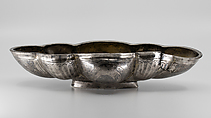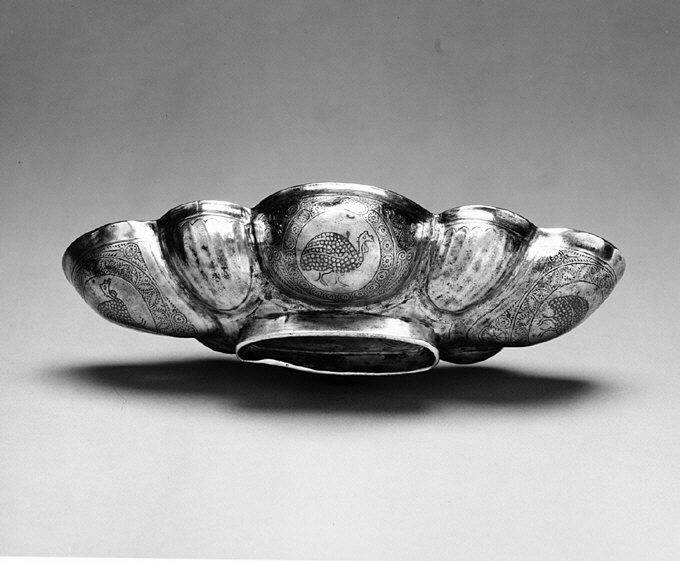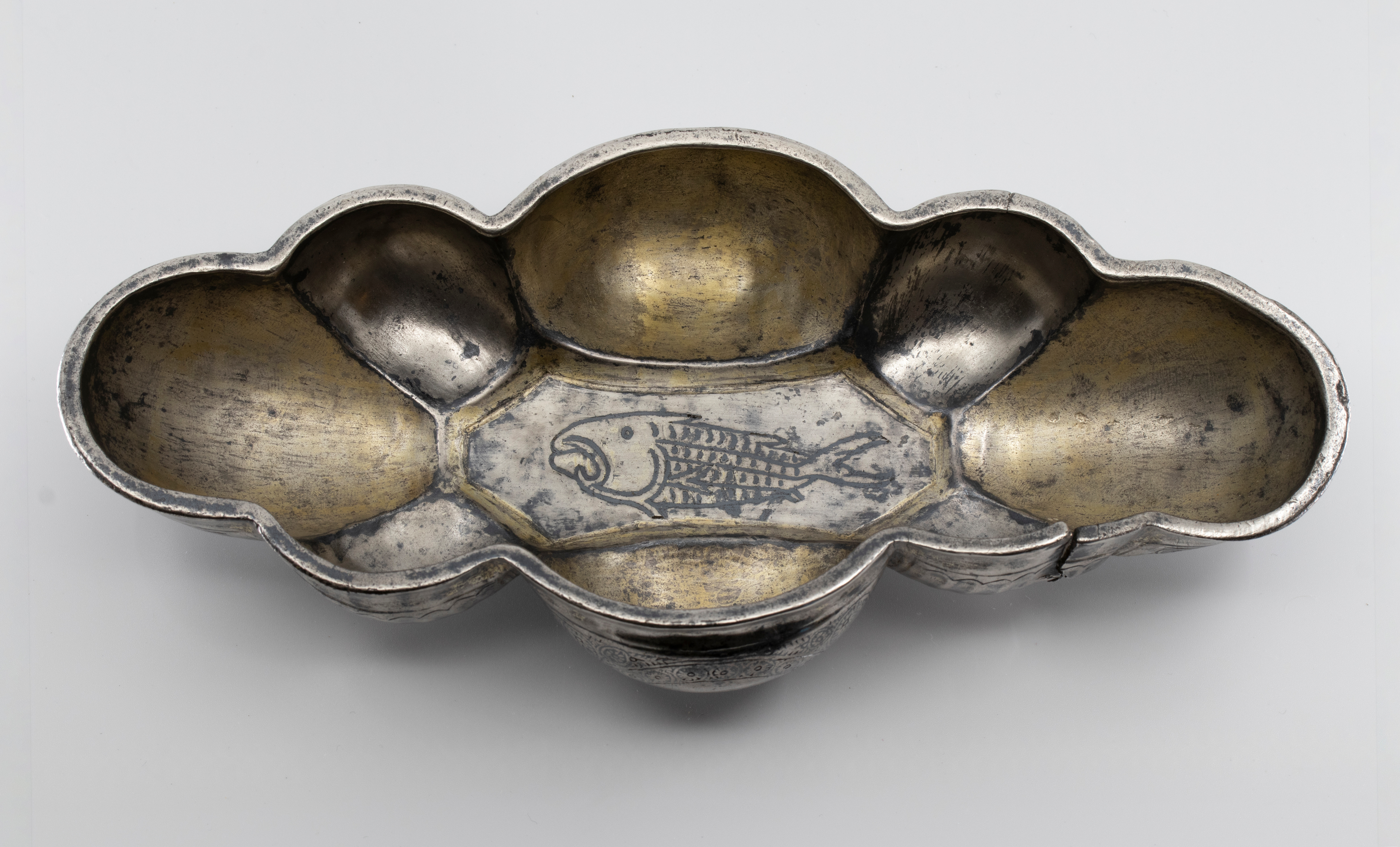Lobed bowl
Not on view
This bowl is shaped like a boat, with large lobes at the ends and middle of each side interspersed with smaller ones. The edges of the lobes are gilt, as are the interiors of the four large lobes. The exteriors of the large lobes are decorated with guineafowl (a close relative of the pheasant) inside round borders of floral and geometric motifs, which are incised and filled with niello. The small lobes are scalloped. The interior of the bowl has an image of a fish with a forked tailfin and four rows of horizontal scales. The fish is likely a saltwater species, such as a tuna or queenfish (scomberoides), native to the Indian Ocean, though it may just as well not be intended to represent a specific species. The fish is also rendered in niello and gilt. The bowl sits on an oblong ring base. On the bottom is a stamp, with an indeterminate design.
This bowl was probably part of a table service owned by someone closely connected to the Sasanian royal court. This is because the production of silver vessels was closely monitored by the court; the stamp on the bottom of this vessel presumably indicates that it was made in an official workshop. The shape suggests that it was a serving vessel.
Lobed elliptical bowls are well-known in Sasanian metalwork. This bowl, however, exhibits certain features that are common in Byzantine silver vessels, including the high base, the concave rim, the fluting on the scalloped lobes, and the detailed rendering of the fish. The guineafowl similarly occurs in both Sasanian and Byzantine metalwork. It seems that this bowl was made in a workshop that drew on diverse models. Thus it reflects the cosmopolitan nature of the Sasanian Empire in the sixth and seventh centuries A.D.
Due to rights restrictions, this image cannot be enlarged, viewed at full screen, or downloaded.
This artwork is meant to be viewed from right to left. Scroll left to view more.




